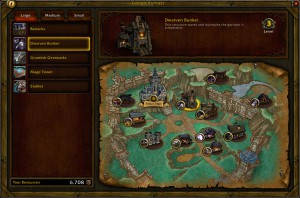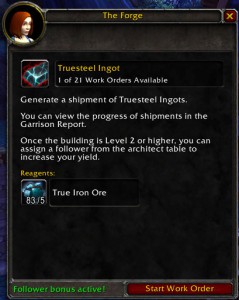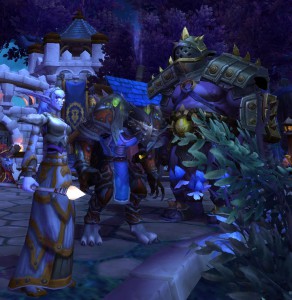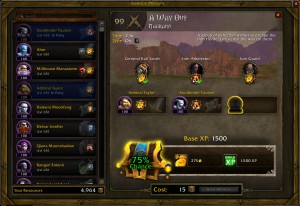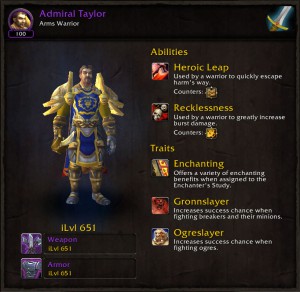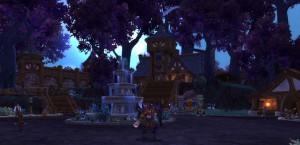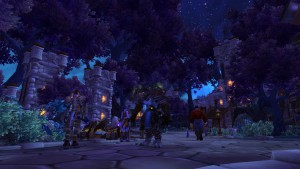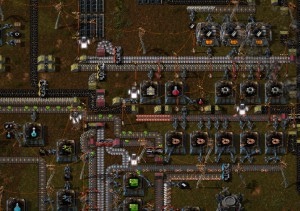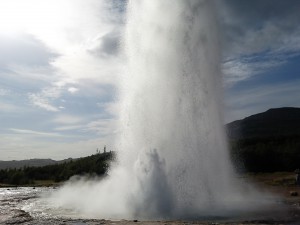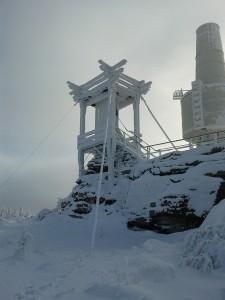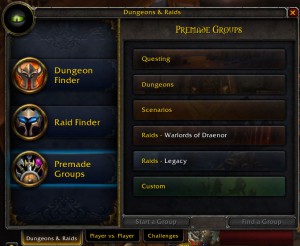Garrison – Buildings
During my ongoing literature review I often discover interesting facts about things I’ve never thought about. Sometimes I can connect these facts with my own observations: The result is mostly a completely new idea why things are as they are. Maybe these ideas are new to you, too. Therefore I’ll share my new science based knowledge with you!
This week: This time, I think about the core game mechanics of a new feature added to World of Warcraft with the expansion pack Warlords of Draenor: the Garrison.
Apart from the followers, the buildings are the second core feature of the Garrison. These buildings are mostly changing the visual appearance of the own Garrison over time and are distinguishing the own Garrison from other players‘ Garrisons. Based on the Garrison’s level, the players have access to a certain amount of different building types. A level one Garrison grants access to a large and a small building slot, a level two Garrison provides one large, one medium and two small slots and a third level Garrison finally offers two large, two medium and three small construction sides. Each building can be upgraded two times increasing its capacity and granting more advanced boni or features. Upgrading a building is also changing its visual appearance
The amount of construction slots limits the access to the available boni for each building size. For example, the large buildings offer the following boni: waygates to certain regions of WoD (Mage Tower), increased amount of followers and an NPC bodyguard (Barracks), items to change the visual appearance of the character and a free bonus loot roll per week (Dwarven Bunker), special engineering tools with different functions and a powerful siege engine (Gnomish Gearworks) and a 20% increased mount speed (Stables). The players then have to choose two of these boni by constructing the buildings.
The small and the medium buildings are working the same way. The small buildings are mostly granting benefits for the professions of the players or are enabling the players to craft items without having the specific profession. The medium buildings are mostly providing ways of generating certain resources the players need to expand the own Garrison or to enhance their equipment.
As a short summary, all these different buildings allow the players to adjust the functionality of the Garrison to support their own playstyle. A player who has a focus on sending the Garrison followers on missions will probably build the Barracks in order to increase the amount of available followers. A player who travels a lot on a mount through the regions of WoD will probably build the Stables.
The buildings also offer a function to transmute one resource into a different resource. For example, the small profession buildings can transmute raw materials into crafting reagents thus helping the players to accumulate enough reagents to craft a new item. Other buildings are transmuting materials into Garrison resources which are needed to start follower missions, to construct new buildings or to buy other items.
The game mechanics of constructing and upgrading buildings is challenging the decision-making and the strategic-planning skills of the players. The players have to analyze their own playstyle and the impact of each bonus on it. Then, the players are able to select and construct the buildings based on this analysis. Moreover, the players are required to plan ahead, because gaining access to the highest building level by upgrading it requires a lot of resources.
